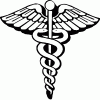How to Avoid Holiday Decorating Medical Emergencies
It might sound like something out of a Hollywood comedy like Home Alone or Christmas Vacation, but medical injuries sustained while putting up holiday decorations have increased in frequency for four consecutive years now, according to the Consumer Product Safety Commission. The government group estimates that there were 15,000 visits to hospital emergency rooms related to holiday decorating in 2012, the most common injuries being falls (34%), lacerations (11%) and back strains (10%). This was the fourth straight year that the number of holiday medical emergencies has topped 12,000.
Here are some safety guidelines to help you avoid joining those ranks.
Ladders
- Always read the instructions on a ladder — including the maximum weight capacity — before using it for the first time. They’re there for a reason.
- Always place the ladder on firm, flat ground.
- Make sure the ladder has slip-resistant feet.
- Place flat ladders at a 75-degree angle.
- Have someone hold the bottom of the ladder while you’re on it.
- Avoid standing on the top three rungs of a straight ladder.
- Don’t use a metal ladder near power lines or electrical equipment.
- Don’t place a ladder in front of a door.
- Allow only one person on a ladder at a time.
Trees
- Set your tree up away from heat sources. Each holiday season, fire departments respond to around 200 fires that started on a Christmas tree.
- If you buy an artificial tree, make sure it is fire resistant.
- If there are small children in the house, avoid hanging heavy, sharp or breakable ornaments and decorations with small parts that could be choking hazards.
Lights
- Examine lights for broken sockets, frayed wires and loose connections, and throw away ones that are damaged.
- Don’t use electric lights on a metallic tree.
- Check lights for labels to ensure they’ve been tested by a nationally recognized laboratory, such as Underwriters Laboratories (UL), Intertek (ETL) or the Canadian Standards Association (CSA).
- Make sure lights hung outside are certified for outdoor use.
Candles
- Place candles on a stable, heat-resistant surface.
- Make sure candles are a safe distance away from flammable items, such as trees, curtains and other decorations.
- Place candles in a location that children and pets can’t easily reach.
- Extinguish candles when you go to bed or leave the house — and even when you leave the room. It’s best to never leave a candle unattended.
Fireplaces
- Don’t burn old wrapping paper. It can ignite quickly and violently, causing a dangerous flash fire.
- Make sure the area around the fireplace is free of flammable items, like decorations and presents.
- Make sure the fireplace has either a metal mesh screen or a glass door. (Leave the glass doors open while the fire burns.)
- Have a certified chimney specialist inspect and clean the chimney every year.
With these tips in mind, hopefully you won’t find yourself jingling all the way to the emergency room.
(Sources: Consumer Product Safety Commission, US Fire Administration)







